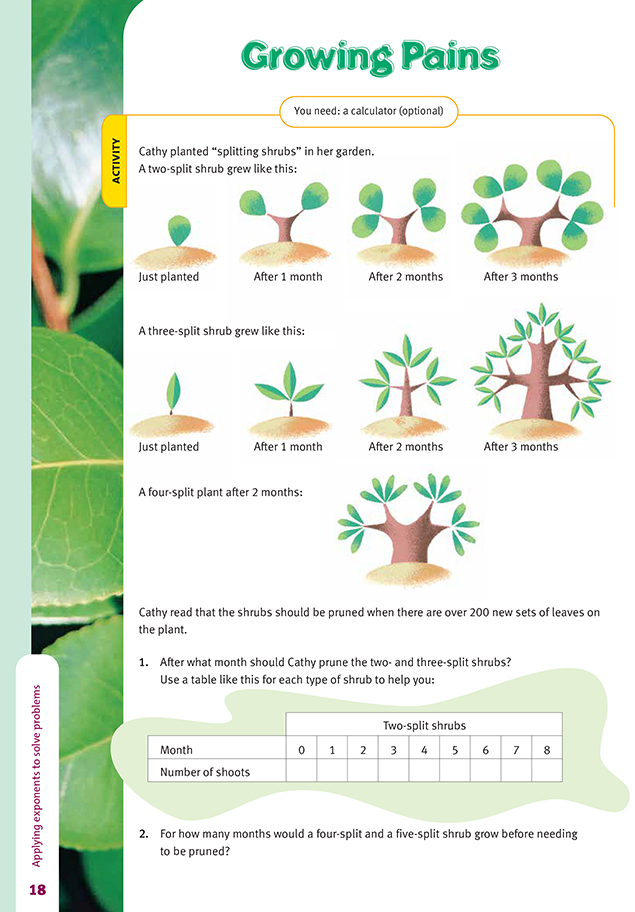This is a level 5 number link activity from the Figure It Out series. It relates to Stage 8 of the Number Framework.
A PDF of the student activity is included.
Click on the image to enlarge it. Click again to close. Download PDF (186 KB)
apply exponents to solve problems
FIO, Link, Number, Book Four, Growing Pains, page 18
A calculator (optional)
The questions in this activity are based on sequences of powers, which increase at a constant rate. Students will gain an appreciation of what is meant by an amount increasing “exponentially”. Encourage your students to think about the strategies they might use as they solve these problems.
The students are asked to use a table to organise the data. They could also use a systematic tree diagram, although it may start to become too congested to be manageable. Nevertheless, a tree diagram could be used in the initial exploration for question 1, especially if it is done on a large piece of paper.
Some students will be able to use the knowledge they have gained from previous activities to make the connection between the months and the appropriate power. This may prompt them to use the calculator constant in conjunction with the table, for example, 23 = 2 x = = for the after-3-months growth by a two-split shrub. Students who are not calling on their previous knowledge to solve the question efficiently
should be prompted by questions such as: “Is there a quicker way to calculate the tree growth?” “Can you remember a shorter way of writing that equation?” This will help them to recall the links between addition, multiplication, and exponents.
For their interest, the students may also compare the exponential sequences if the relationship between months and number of shoots is graphed on a number plane.
You can extend the activity by asking the students to apply the idea of exponential growth by writing their own similar problems for a different context. For example: “A rumour is being spread around our city, which has a population of X. If each person who heard the rumour passed it on to three other people the following day, how long would it take for everyone in our city to hear the rumour?”
Answers to Activity
1. A table for a two-split shrub will look like this:
So the shrub will need pruning after the eighth month.
For a three-split shrub, the table is:
So the shrub will need pruning after the fifth month.
2. Both shrubs would be pruned after 4 months.



